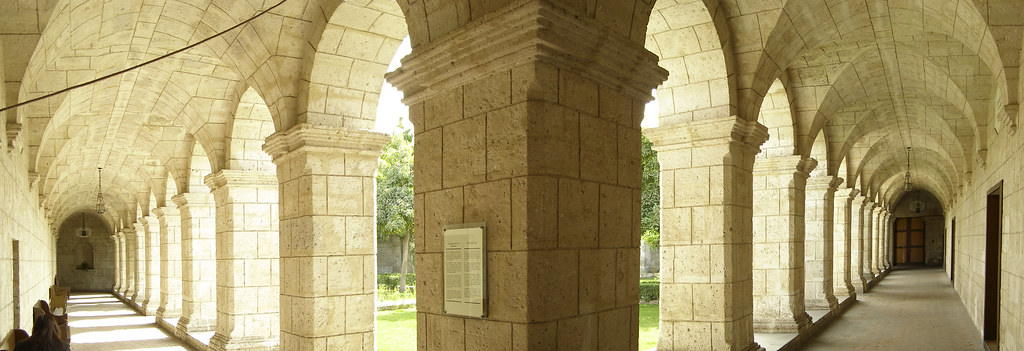Touring the historic center of Arequipa, Peru, you will have a religious experience. A peaceful route full of history, stunning architecture and strange miracles.
Renowned for its stunning blue sky, its towering volcanoes and lush vegetation in the valley, the White City encourages Peruvians and foreigners alike to come and see two ancient cloisters that now function as museums.
The itinerary may take from three hours to an entire day: it all depends on your interest and available time. The trip involves two convents that will take you to the past and provide you with a perspective of the beliefs of Peruvian societies of past ages.
Colonial Treasure
During the day you can visit the Convent of Santa Teresa, which was built in 1700 and received women from different social strata who wanted to devote their lives to prayer.
Upon entering its five rooms open to the public, you can feel the loneliness they felt and their strength during the long years of confinement.
Even though this was a modest convent, inside, magnificent works of religious art, depicting the Nativity and the most important scenes of the life of the Lord are displayed.
Jewelery works in gold and silver are displayed in what was formerly the infirmary. Eighteenth century sculptures adorn the halls and classrooms.
In addition the site has a spectacular colonial architecture, with original vaulted ceilings, walls made of volcanic rock (sillar) and small gardens where one can only hear the birds singing.
The silence lingers in Santa Teresa, since currently, 21 nuns remain in this cloister that will soon be 300 years old.
The mysterious convent
The monastery of Santa Catalina, known as one of the most important tourist attractions in Arequipa, is the next place on the itinerary.
To walk in the footsteps of women who dared to surrender entirely to God, leaving family and friends behind, is extremely interesting. But visiting it at night makes an entirely different experience: much more dramatic and spiritual.
We believe that that is the reason that led to its opening during the night twice a week (Tuesday and Thursday). We recommend you enter at 6 p.m. so that you can visit its 21 rooms and beautiful plazas and walkways illuminated by the moonlight.
It was August 15, 1970 when this convent opened its doors for the first time to the public and presented 400 refurbished pieces, dozens of works from the Cuzco School and an important collection of religious art.
According to the story, cells were built for the nuns due to the earthquakes, where currently equipment and utensils from that time are in exhibition.
The local guides explained that some of the nuns decided on the closure because of an impossible love, a marriage that they did not wish to realize or because they lacked maternal vocation. We know, too, that they came from wealthy families and some were interned along with their maids so that they would wait on them.
Its architectural style is colonial, but emphasizes the fusion of Spanish and Indian elements and its gardens suggest a stay of hours with a good book.
Santa Teresa Convent
Melgar 303, Historic Center of Arequipa.
Monday through Saturday: 9 a.m.-5 p.m.
Sunday: 9 a.m.-1:00pm.
Entry is 10 soles, 5 soles for students.
Santa Catalina Convent
Santa Catalina 301, Historic Center of Arequipa.
Monday, Wednesday, Saturday and Sunday: 8 a.m.-5 p.m.
Tuesday and Thursday: 8 a.m.-8 p.m.
Entry is 30 soles.
Tour Suggested:





